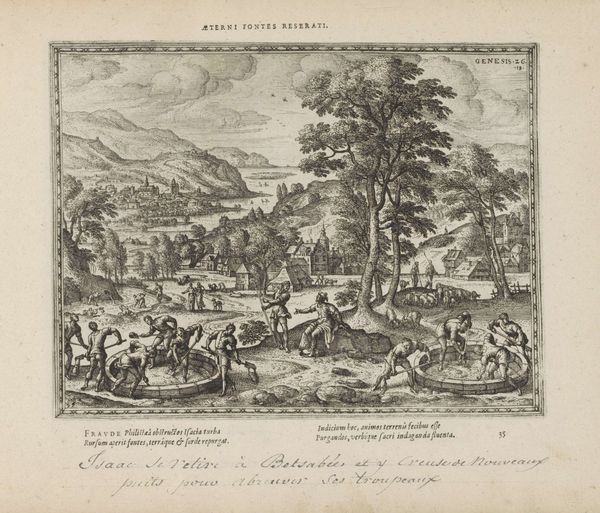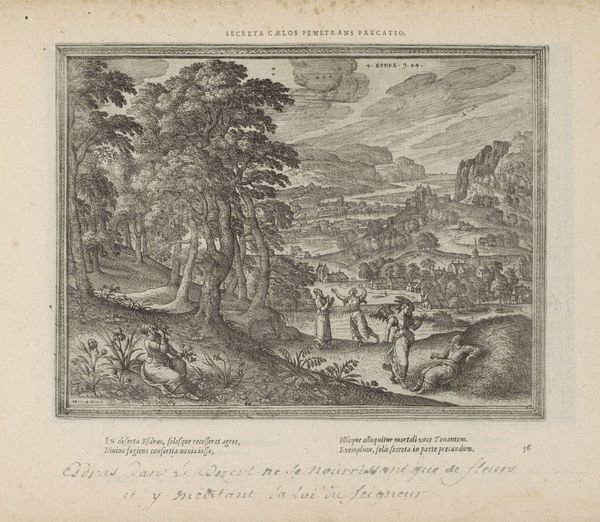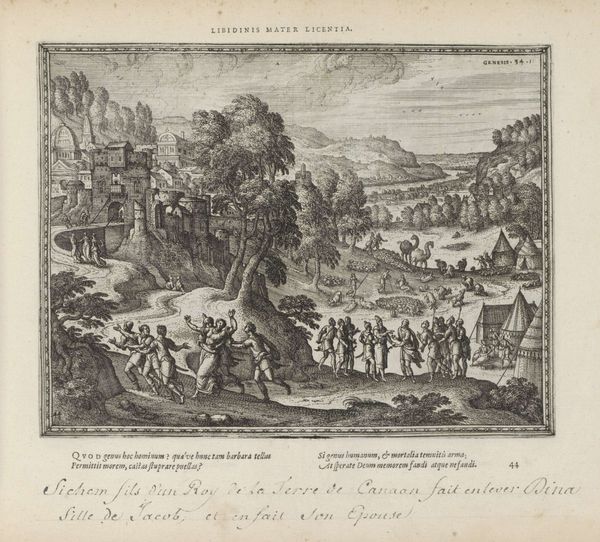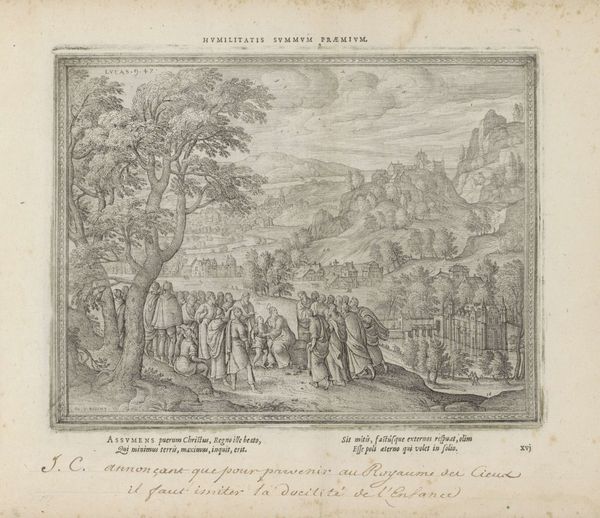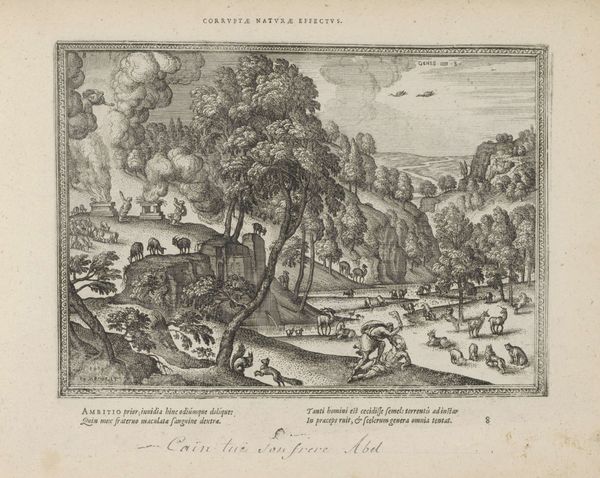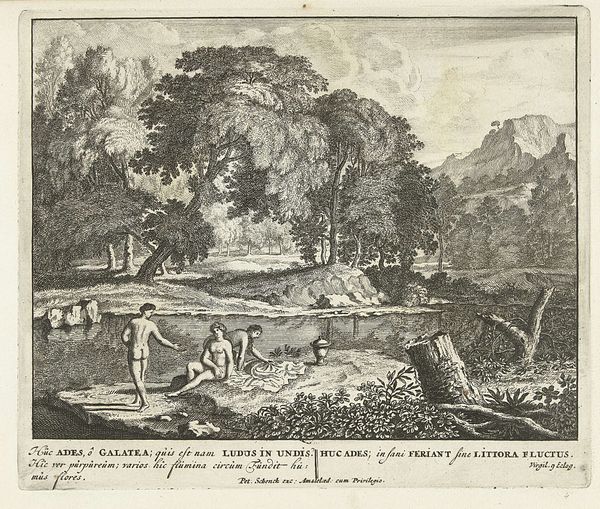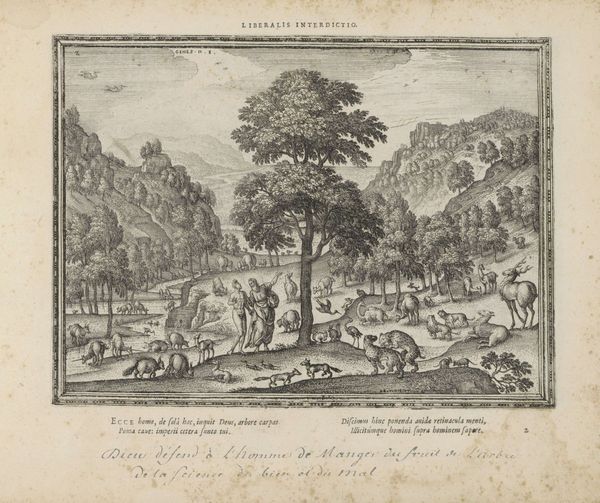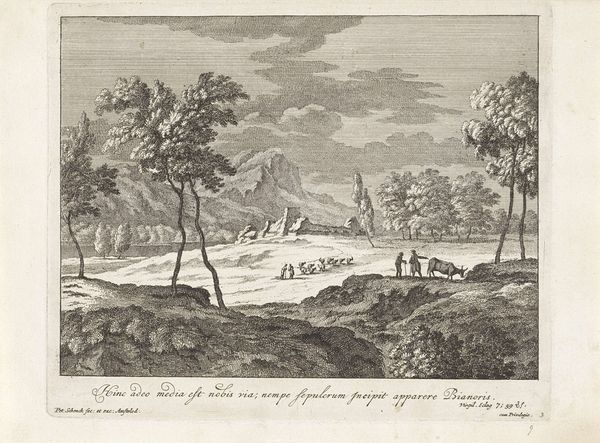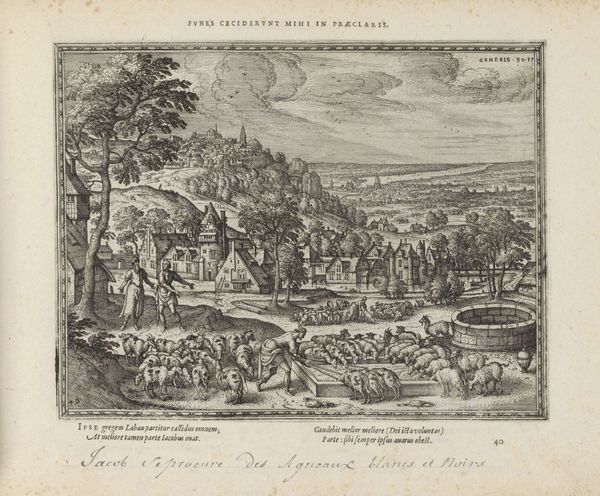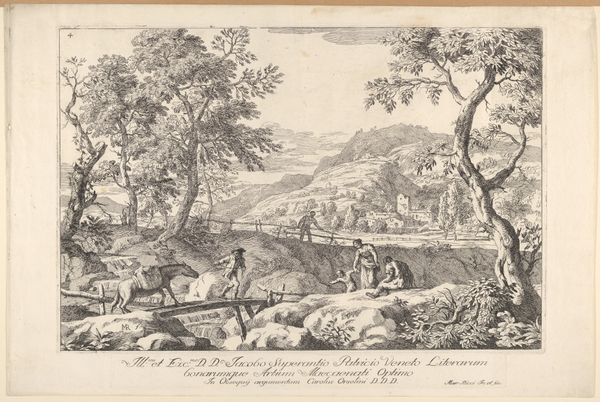
print, engraving
#
aged paper
#
narrative-art
#
baroque
# print
#
old engraving style
#
landscape
#
engraving
Dimensions: height 189 mm, width 245 mm
Copyright: Rijks Museum: Open Domain
Here we see Pieter van der Borcht's etching, depicting the Philistines jealously filling Abraham’s wells. The well, a symbol of life-giving water, is here an object of contention. Wells represent not only sustenance but also prosperity and divine blessing, and the act of filling them becomes an act of malice, a deliberate attempt to undermine and destroy. Consider other images throughout history where water sources become focal points of conflict: ancient battles fought over rivers, or the modern-day struggles for control over oil pipelines, the liquid lifeblood of industry. What surfaces is a recurring motif: control over essential resources as a means of exerting power. These acts, charged with primal emotions such as envy and greed, resonate across centuries. The act of spoiling the wells taps into a deep-seated fear of scarcity and the psychological impact of depriving others of their basic needs, powerfully engaging viewers on a deep, subconscious level. Thus the motif evolves, from literal wellsprings to symbols of broader existential struggles.
Comments
No comments
Be the first to comment and join the conversation on the ultimate creative platform.

